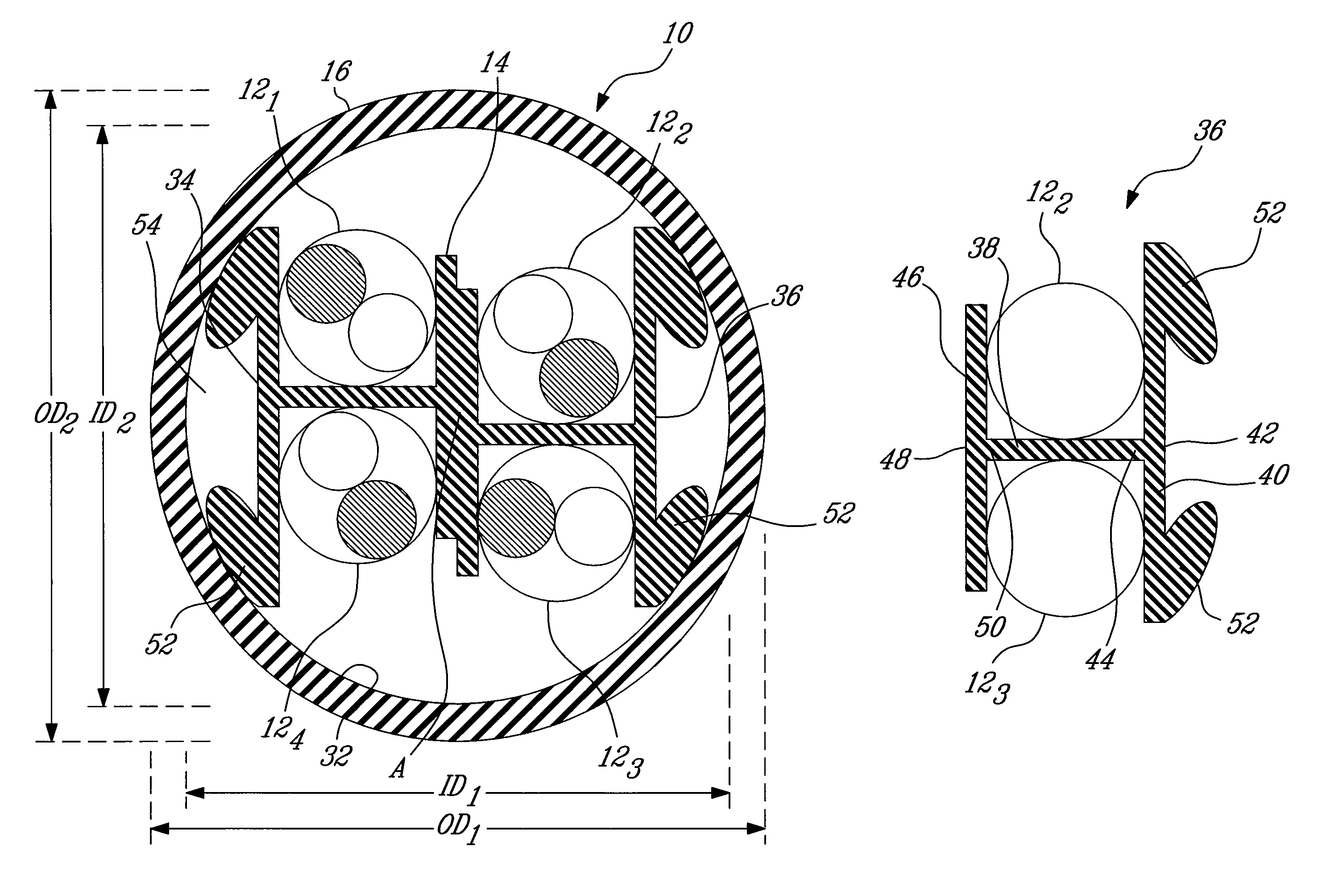Web for separating conductors in a communication cable
a technology for separating conductors and communications cables, applied in the direction of insulated conductors, cables, conductors, etc., can solve the problems of mode signal noise, reduced cross talk between adjacent cables, and given cable distances the same distan
- Summary
- Abstract
- Description
- Claims
- Application Information
AI Technical Summary
Benefits of technology
Problems solved by technology
Method used
Image
Examples
Embodiment Construction
[0015]Referring now to FIG. 1, a telecommunications cable, generally referred to using the reference numeral 10, will now be described. The cable 10, is comprised of four (4) twisted pairs of conductors 12 separated by a separator web 14 and encased in a cable jacket 16. In a particular embodiment one or more filler elements as in 18 can be included positioned between the cable jacket 16 and the conductors 12. Additionally, a shielding foil or the like (not shown) may also be included between positioned between cable jacket 16 and the filler elements 18.
[0016]Still referring to FIG. 1, as known in the art, the twisted pairs of conductors 12 are typically twisted with different twist lays (i.e. number of twists per unit length). These twist lays can be regular and predetermined or can vary along the length of the cable 10, for example between a maximum and a minimum value. In the latter case, the twist lays can vary either randomly or in accordance with a predetermined pattern (for e...
PUM
| Property | Measurement | Unit |
|---|---|---|
| dielectric constant | aaaaa | aaaaa |
| dielectric constant | aaaaa | aaaaa |
| conductive | aaaaa | aaaaa |
Abstract
Description
Claims
Application Information
 Login to View More
Login to View More - R&D
- Intellectual Property
- Life Sciences
- Materials
- Tech Scout
- Unparalleled Data Quality
- Higher Quality Content
- 60% Fewer Hallucinations
Browse by: Latest US Patents, China's latest patents, Technical Efficacy Thesaurus, Application Domain, Technology Topic, Popular Technical Reports.
© 2025 PatSnap. All rights reserved.Legal|Privacy policy|Modern Slavery Act Transparency Statement|Sitemap|About US| Contact US: help@patsnap.com



